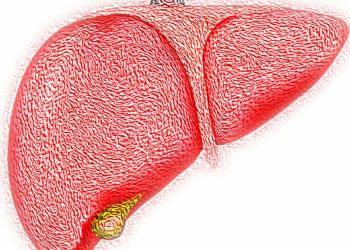Summary: Study reveals vitamin B12 deficiency doesn’t just lead to anemia in children, it also hinders brain development and motor function.
Source: University of Copenhagen
Vitamin B12 deficiency in infants leads to poor motor development and anaemia, according to a study from Burkina Faso conducted by the University of Copenhagen and Médecins Sans Frontières. B12 deficiency is an enormous, yet overlooked problem, and the food relief we currently supply is not helping. According to the researchers, the problem calls for new solutions.
In Denmark, cases of poor psychomotor development are regularly seen in young children raised on vegan diets, though such outcomes are preventable with daily B12 supplements. But for children in low-income countries, the chances of ever meeting their vitamin B12 requirements are far worse.
This is reflected in widespread B12 deficiency among young children in Burkina Faso, according to a study from the University of Copenhagen conducted in collaboration with Médecins Sans Frontières (Doctor’s Without Borders).
The results have been published in the renowned journal Plos Medicine.
A lack of vitamin B12 doesn’t just potentially lead to anemia, it can damage the nervous system. And for young children, B12 is crucial for brain development.
“Among the many children who participated in our study, we found a strong correlation between vitamin B12 deficiency and poor motor development and anemia,” says Henrik Friis, first author of the study and a professor at the University of Copenhagen’s Department of Nutrition, Exercise and Sports.
For many years, there has been a focus on vitamin A, zinc and iron deficiencies when it comes to malnutrition across the globe, whereas there is a paucity of research on B12 deficiency.
“B12 deficiency is one of the most overlooked problems out there when it comes to malnutrition. And unfortunately, we can see that the food relief we provide today is not up to the task,” says Henrik Friis, who has worked with nutrition and health in low-income countries for many years.
Over 1,000 children with acute malnutrition aged 6-23 months participated in the study. The children’s B12 levels were measured both before and after three months of daily food relief rations containing the recommended B12 content. When the study began, two-thirds of the children had either low or marginal levels of B12.
Short term food relief does not fill up B12 stores
“During the period when children were provided with food relief, their B12 levels increased, before decreasing considerably once we stopped the program. Despite provisioning them with food relief for three months, their stores remained far from topped up. This, when a typical food relief program only runs for four weeks,” says Henrik Friis.
Even after three months of food relief, one third of the children continued to have low or marginal levels of B12 stored. The unfortunate explanation is that there is a cap on how much B12 can be absorbed.
“A child’s gut can only absorb 1 microgram of B12 per meal. So, if a child is lacking 500 micrograms, it will take much longer than the few weeks that they have access to emergency food relief,” explains Vibeke Brix Christensen, a pediatrician and medical advisor to Médecins Sans Frontières and co-author of the study.
“Furthermore, longer-term relief programs aren’t realistic, as humanitarian organizations are trying to reduce the duration of treatment regimens with the aim of being able to serve a larger number of children for the same amount of money”, continues Vibeke Brix Christensen.
She points out that it might make a difference to divide the necessary amount of vitamin B12 across several meals, which would probably allow children to absorb the same amount of B12 each time. But the problem is that if widespread B12 deficiency appears among children in low-income countries, it is difficult to do anything about it.
New solutions needed on the table
Preventing B12 deficiency would be the best course of action. Unfortunately, lasting solutions have yet to become readily available according to Professor Friis.
Because our bodies cannot produce B12 on their own, we need to have it supplied to us through animal-based products or synthetic supplements. However, in many low-income countries, access to animal-based foods is incredibly difficult for the general population. One might wonder, are tablets or fortified foodstuffs the way to prevention?
“Possibly, but the problem in low-income countries is poorly resourced and weak health care systems. Handing out tablets to millions and millions of people is not cost-effective. And to enrich foods with B12, it must be added to foodstuffs that are accessible to the poor. This requires industrial expansion, as many people currently eat only what they can produce themselves. Furthermore, it requires legislation that it is not based on voluntary participation,” says Henrik Friis, who has greater faith in other types of solutions:


“Individual households could be incentivized to keep chickens and perhaps goats, which a mother could manage and use to provide access to animal-based foodstuffs. Finally, work needs to be done to develop fermented products with B12 producing bacteria – something that doesn’t yet exist, but towards which researchers and companies are already working,” concludes Henrik Friis.
The researchers are in dialogue with UNICEF’s Supply Division, based in Copenhagen, about how products to treat moderate to acute malnutrition can be improved.
Notes:
VICIOUS CIRCLE
- B12 deficiency can be transmitted from mother to child. If a mother is B12 deficient, her child will be born B12 deficient as well, before receiving breast milk with too little B12 in it. A child’s B12 deficiency can affect the formation and regeneration of their intestinal cells. Consequently, the child’s capacity to absorb B12 and other vital nutrients will be reduced. In this way, B12 deficiency contributes to the development of malnutrition.
ABOUT ACUTE MALNUTRITION
- Since 2010, the Department of Nutrition, Exercise and Sports (NEXS) at the University of Copenhagen has worked with the WHO and UNICEF, among others, with a focus on improving the emergency food relief used to combat childhood malnutrition.
- According to UNICEF, approximately 200 million children under the age of five suffer from malnutrition worldwide. Malnutrition contributes to the death of three million children every year.
- Acute malnutrition in children is characterized by children who are too thin in proportion to their height. Globally, it is estimated that approximately 50 million children are acutely malnourished, with two thirds of these suffering from moderate malnutrition and the remaining third suffering from severely acute malnutrition.
- Today, only about 20% of severely malnourished children receive emergency food relief.
About this diet and neurodevelopment research news
Author: Maria Hornbek
Source: University of Copenhagen
Contact: Maria Hornbek – University of Copenhagen
Image: The image is in the public domain
Original Research: Open access.
“Serum cobalamin in children with moderate acute malnutrition in Burkina Faso: Secondary analysis of a randomized trial” by Henrik Friis et al. PLOS Medicine
Abstract
Serum cobalamin in children with moderate acute malnutrition in Burkina Faso: Secondary analysis of a randomized trial
Background
Among children with moderate acute malnutrition (MAM) the level of serum cobalamin (SC) and effect of food supplements are unknown. We aimed to assess prevalence and correlates of low SC in children with MAM, associations with hemoglobin and development, and effects of food supplements on SC.
Methods and findings
A randomized 2 × 2 × 3 factorial trial was conducted in Burkina Faso. Children aged 6 to 23 months with MAM received 500 kcal/d as lipid-based nutrient supplement (LNS) or corn–soy blend (CSB), containing dehulled soy (DS) or soy isolate (SI) and 0%, 20%, or 50% of total protein from milk for 3 months.
Randomization resulted in baseline equivalence between intervention groups. Data on hemoglobin and development were available at baseline. SC was available at baseline and after 3 and 6 months. SC was available from 1,192 (74.1%) of 1,609 children at baseline.
The mean (±SD) age was 12.6 (±5.0) months, and 54% were females. Low mid-upper arm circumference (MUAC; <125 mm) was found in 80.4% (958) of the children and low weight-for-length z-score (WLZ; <−2) in 70.6% (841). Stunting was seen in 38.2% (456). Only 5.9% were not breastfed.
Median (IQR) SC was 188 (137; 259) pmol/L. Two-thirds had SC ≤222 pmol/L, which was associated with lower hemoglobin. After age and sex adjustments, very low SC (<112 pmol/L) was associated with 0.21 (95% CI: 0.01; 0.41, p = 0.04) and 0.24 (95% CI: 0.06; 0.42, p = 0.01) z-score lower fine and gross motor development, respectively.
SC data were available from 1,330 (85.9%) of 1,548 children followed up after 3 months and 398 (26.5%) of the 1,503 children after 6 months. Based on tobit regression, accounting for left censored data, and adjustments for correlates of missing data, the mean (95% CI) increments in SC from baseline to the 3- and 6-month follow-up were 72 (65; 79, p < 0.001) and 26 (16; 37, p < 0.001) pmol/L, respectively.
The changes were similar among the 310 children with SC data at all 3 time points. Yet, the increase was 39 (20; 57, p < 0.001) pmol/L larger in children given LNS compared to CSB if based on SI (interaction, p < 0.001). No effect of milk was found. Four children died, and no child developed an allergic reaction to supplements.
The main limitation of this study was that only SC was available as a marker of status and was missing from a quarter of the children.
Conclusions
Low SC is prevalent among children with MAM and may contribute to impaired erythropoiesis and child development. The SC increase during supplementation was inadequate. The bioavailability and adequacy of cobalamin in food supplements should be reconsidered.















